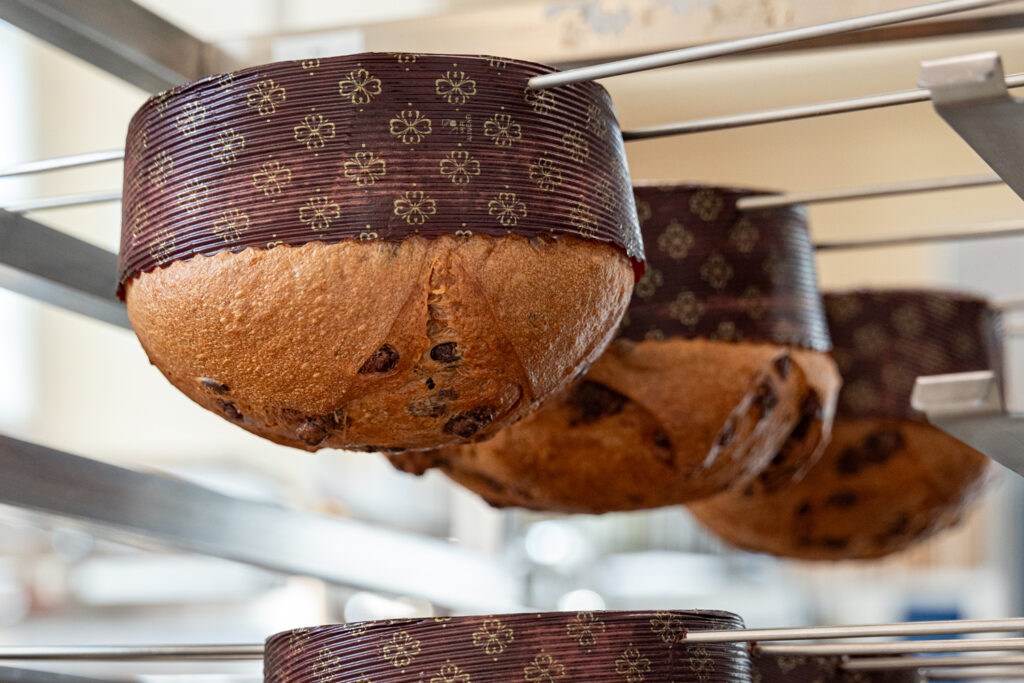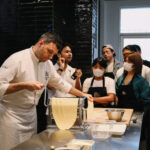La Colomba e il Panettone: A Dove and Raisins
La Colomba Pasquale (or Easter’s Dove) is an Italian sweet and fluffy bread, dusted with pearled sugar and filled with candied orange, eaten for Easter in Italy. Even if the dish enlightens each table for Easter, its confection requires a lot of time and patience as the dough should ferment with yeast for thirty hours. Giving kids the time to look for chocolate eggs around the garden and friends and family to enjoy a nice meal! Even though, relying on the Italian famous saying: ‘Natale con i tuoi, Pasqua con chi vuoi’ – Christmas with your family, Easter with whomever you want – “Pasqua” can be celebrated with anyone.
Origins Colomba
Although many different stories could explain its origins, the most popular one takes place during the Medieval Age, in Pavia, Lombardy. The King Alboin sieged Pavia and eventually won. Citizens, who thus surrendered, offered bread in the shape of a dove, symbolizing peace. In the 30’s it got commercialized in Milan, Lombardy, and is now a specialty of the region.
Quite like its spring homologue, il Panettone is exclusively served at Christmas and New Year. Also a Milan’s specialty, il Panettone is well-known all around the globe and largely exported. However, the authentic recipe is very strict, and the dough cannot exceed 20% of candied fruit, 16% of butter, and the eggs must contain at least 4% of yolk. Those severe guidelines help keeping the product in its initial state and preserve Italian’s pastry’s identity. Just like Colomba, it takes almost two days to make Panettone’s dough, since it must ferment and rise.
Origins Panettone
Panettone’s legend of origin takes place in the 15th century at the court of Ludovico Il Moro, Duke of Milan. The court’s chef burnt the dessert during a banquet and was very desperate. His assistant, Toni, helped him thanks to a dough he prepared with the former cake’s leftovers. While everyone enjoyed his cake, the grateful Chef claimed ‘L’è ‘l pan del Toni’ literally meaning ‘it’s Toni’s bread’. The saying gave its name to the dessert becoming il Panettone.
Fun Fact: A Milanese tradition is to eat panettone until 3 February, the day of St Blaise, the protector of the throat. The belief is that those who eat it on that day are therefore protected from colds and sore throats for the rest of the winter period.
Both recipes however find some divergences when crossing regions borders, from changing the type of candied fruits (orange in Milan, Corynthian raisins in Sicily) or even adding Vino Santo in la Colomba in Toscana. Regardless of the small differences, all Italian table hold a Colomba for Easter, and a Panettone for Christmas and New Year.
Did this blog wake your curious appetite up? Join our Colomba and Panettone courses!
For more information…
![]() Tel.: 02-150-8786
Tel.: 02-150-8786 ![]() Inbox: m.me/thefoodschoolbkk
Inbox: m.me/thefoodschoolbkk ![]() LINE: @thefoodschool
LINE: @thefoodschool
For more courses…
CERTIFICATED COURSES
INTENSIVE WEEKEND PROGRAMMES
SHORT COURSES






